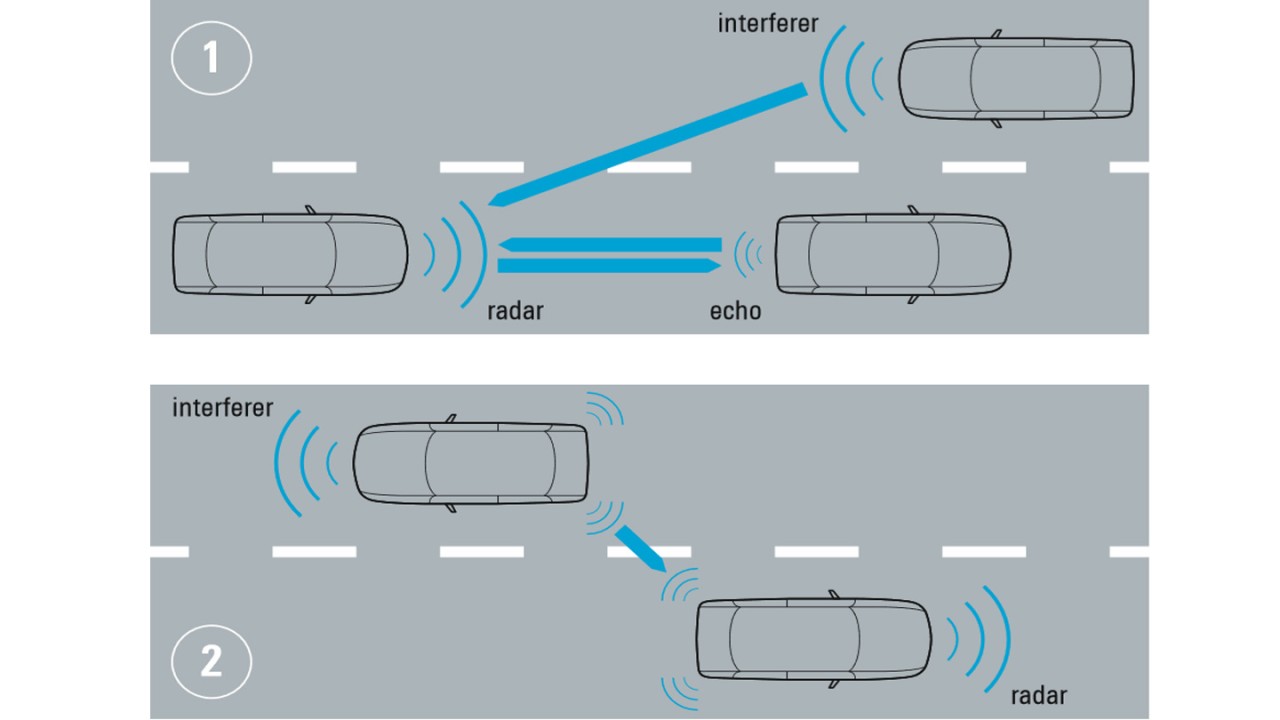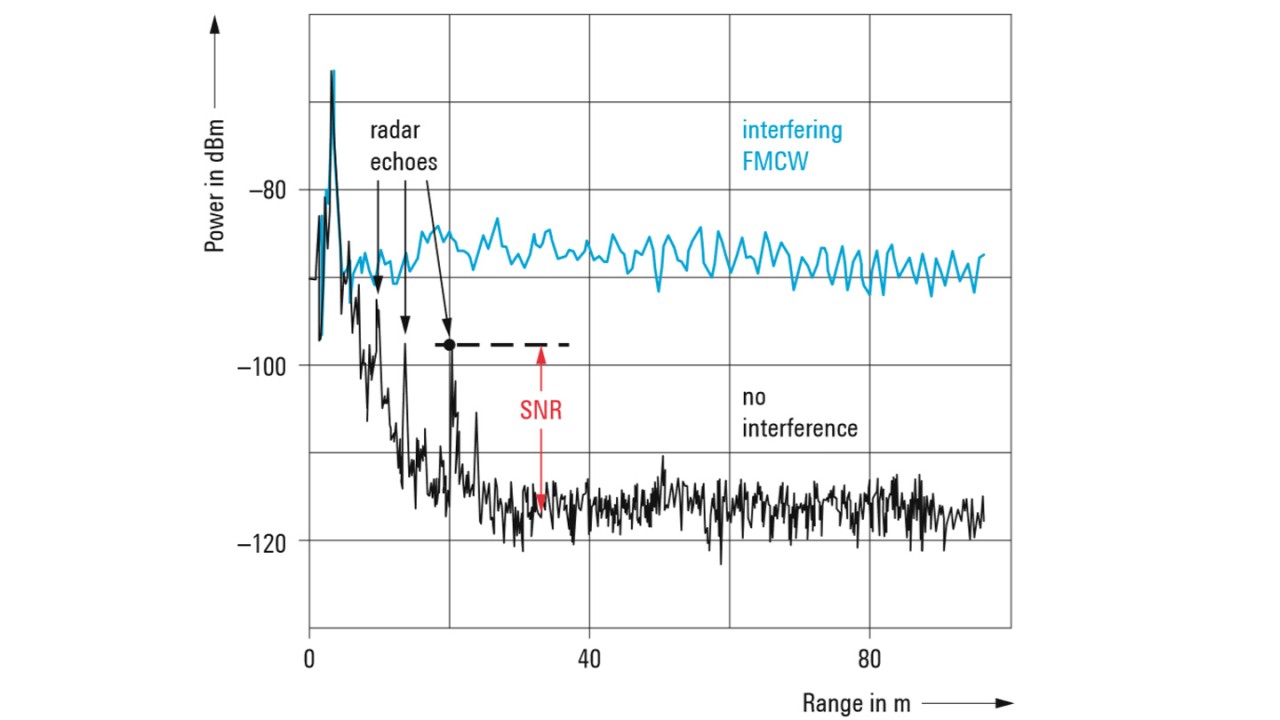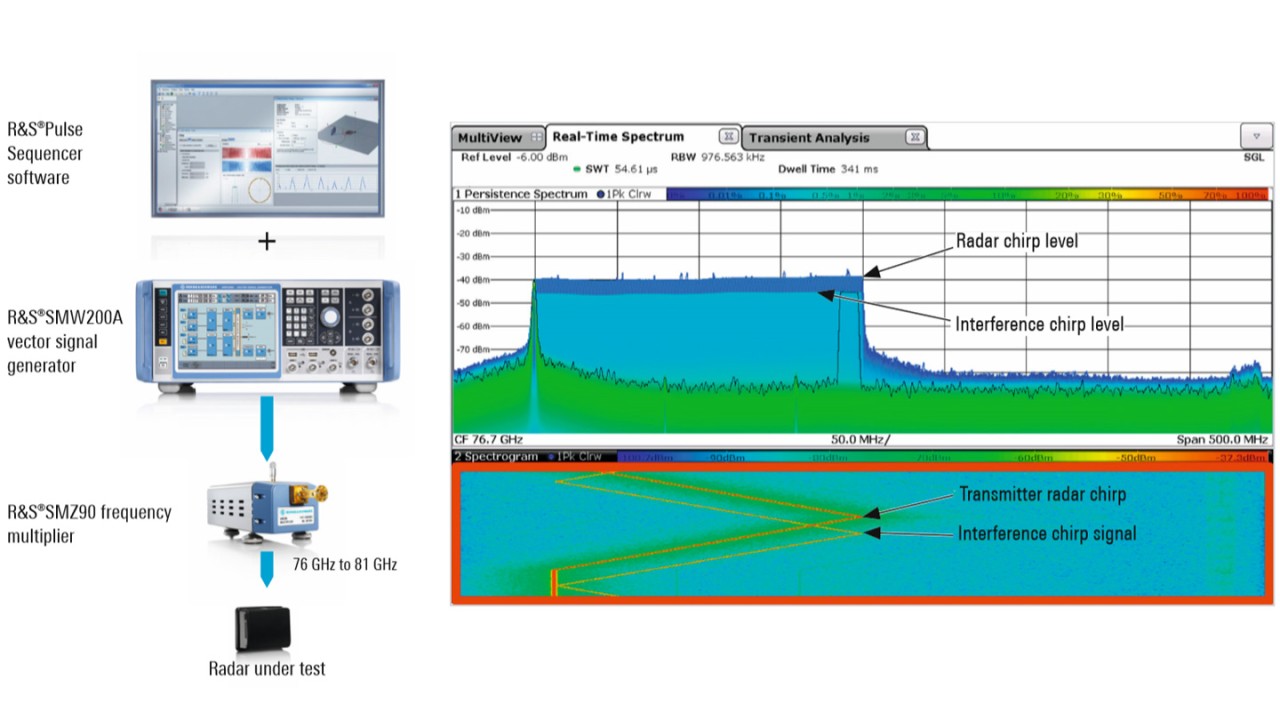Automotive radar sensors must address interference issues. The R&S®Pulse Sequencer software simulates arbitrary RF environments and supports the generation of radar norm interferers to test automotive radars operating in the 24 GHz, 77 GHz and 79 GHz frequency band.


Two scenarios where automotive radars interfere with each other
Your task
The interference mitigation capability of safety critical automotive radars must be addressed in order to ensure proper radar echo signal detection, accurate range, Doppler and azimuth measurements and object classification in this highly occupied frequency spectrum. The different types of available automotive radar sensors share the limited unlicensed spectrum and are likely to interfere with each other.


Noise level of a 77 GHz automotive radar spectrum:
The noise level of a 77 GHz automotive radar spectrum strongly increases in the presence of an interfering FMCW upchirp (1 ms duration, 960 MHz bandwidth).
Regulations and standards on interference testing and mitigation are available for navigational radars, such as IEC 62388:2013, but not yet for automotive radars. In radar processing, the noise level of the measured frequency spectrum increases when interfered by other RF signals operating in the same band. Such signals that fall into the radar receiver bandwidth can easily reduce the probably of detection since the signal-to-noise level (SNR) of the echo signal decreases significantly.
Objects with low radar cross sections, such as pedestrians, may not be detected or will be lost during tracking, which can lead to dangerous situations in city traffic. It is therefore mandatory to test automotive radars with a norm interferer to verify their mitigation techniques and robustness against interference. The norm interferer should consist of arbitrary wideband RF signals in different automotive radar bands to test all kinds of automotive radars.
T&M solution
The flexible and easy-to-use norm interferer solution from Rohde & Schwarz is an advanced approach for testing automotive radars throughout the research and development chain to final acceptance tests, as well as during their operational lifetime and for testing upcoming new waveforms of any type of automotive radar sensor.
The test setup consists of a powerful software program, a vector signal generator as the transmitter and a frequency multiplier. The R&S®Pulse Sequencer software can be used to generate any type of norm interferer signal with arbitrary modulation, position in space, antenna motion and antenna pattern. It is even possible to simulate complex RF environments with different norm interferer signals and sources.
The defined signals are transferred to a vector signal generator, such as the R&S®SMW200A, via the local network or a USB stick. The vector signal generator with its internal wideband baseband hardware generates I/Q modulated signals with up to 2 GHz signal bandwidth at radio frequencies for the 24 GHz ISM band. An additional R&S®SMZ90 frequency multiplier can upconvert the generated phase or frequency modulated signals and pulsed signals to the 77 GHz and 79 GHz bands. For non-conducted environments, a dedicated antenna is used to transmit the test signals towards the device under test. This compact norm interferer test solution realistically emulates radar interference signals, with configurable parameters, in all relevant automotive radar bands.
It can also be used in the early phases of research and development to analyze the performance of automotive radars in highly interfered electromagnetic environments.
Key benefits
- Easy configuration and fast reconfiguration of norm interferer parameters
- Fully calibrated internal wideband baseband hardware (R&S®SMW200A)
- Generation of several different norm interferers
- Generation of customized signal waveforms
- Standalone commercial off-the-shelf solution – no synchronization with radar sensor required
- Extension of radio frequencies into the E band with R&S®SMZ90 for pulsed, frequency- and phase-modulated signals
- Fully remote controllable







